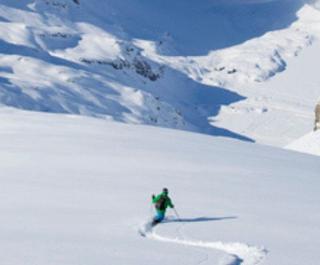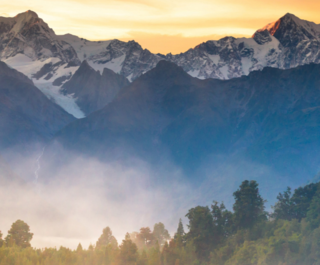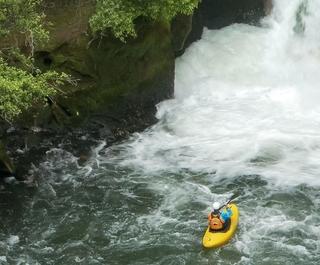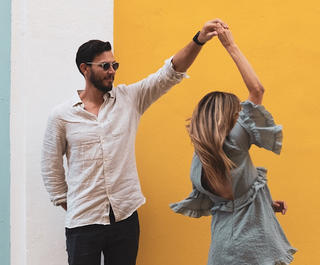
It’s an eerie sensation on a moonless night to be deep in Waipoua Forest on the west coast of New Zealand’s far north. A kiwi, New Zealand’s national flightless bird, rushes across my path. My guides say I’m lucky to have spotted one.
Other night birds screech in the distance. It’s a warm night but I feel chilly. We’ve come to look at some of the world’s oldest trees. The two most famous are enormous New Zealand kauris.
They’re called, in Maori, Tane Mahuta, “lord of the forest” and Te Matua Ngahere, “father of the forest”. The bigger, Tane Mahuta, soars a whopping 52m (30m is more common for super-tall kauri trees) and is believed close to 3000 years old.
This area, termed Northland, includes the Bay of Islands and extends to New Zealand’s northern tip.
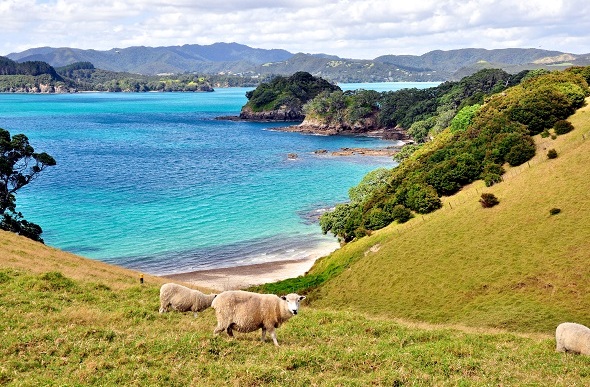 Sheep graze on Urupukapuka Island, part of the Bay of Islands near Paihia, New Zealand
Sheep graze on Urupukapuka Island, part of the Bay of Islands near Paihia, New Zealand
Australian travelers commonly head south from Auckland but there’s strong argument for checking out the far north, too - a place rich in natural beauty and Maori culture.
I base myself in Kerikeri, a tourist town on the east coast of this very narrow part of the country, with its clusters of hotels, B&Bs, arts-and-craft outlets, galleries, coffee shops and restaurants. When I mention I’m going to Paihia, locals advise that I should also stop at nearby Russell.
Formerly a boisterous little port, this quaint one-cop town is where the country’s first colonial settlers put down roots. Scenic Russell (then called by its Maori name, Kororareka) was New Zealand’s first capital. It’s less than 30 minutes’ travelling time from the famed Waitangi treaty site.
Alongside Russell’s ferry terminal is a police station. According to the solitary cop: “There’s hardly any crime here. It’s a popular posting and comes with a nice house.”
The town’s sights include Christ Church, a tiny building that’s New Zealand’s oldest still-operating church. This Anglican church’s pretty graveyard seems plucked from a TV show set in an English village. In it are buried prominent Maori chiefs and early British settlers.
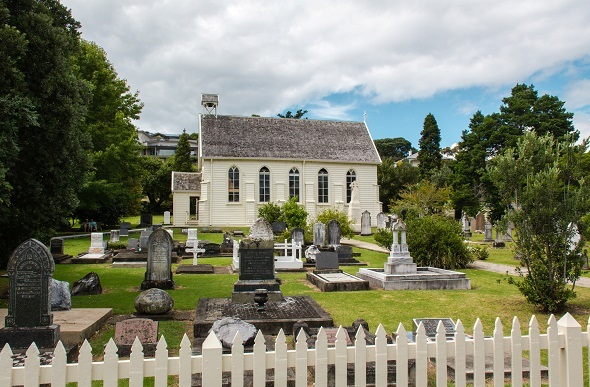 Christ Church at Russell, Bay of Islands, New Zealand.
Christ Church at Russell, Bay of Islands, New Zealand.
A few minutes’ stroll away is Pompallier House, a 19th-century building which once headquartered the French Catholic mission to the western Pacific. It contains a museum, souvenir shop and still-working 1840s printing press.
Major attractions in these parts include the 144-isle Bay of Islands and Ninety Mile Beach which isn’t 90 miles long but measures a still-impressive 88kms.
A 15-minute ferry ride takes me from Russell (population 826) to larger Paihia (1770 people). From Paihia it’s only 2kms to the Waitangi Treaty Grounds, New Zealand’s most important historic site. Here the Treaty of Waitangi was signed between Maori chiefs and British representatives, giving Britain the right to rule. The document remains controversial with some Maoris believing the British tricked their ancestors.
Nowadays the grounds boast a museum, campsite, cultural performances and explanations of Maori history. My interest in tribal customs is tweaked.
Next morning, I board a waka (traditional canoe) which whisks me 300m to a sacred islet called Motu Maire. After brief prayers, I listen to more tales from Maori oral history. Tribe members perform a blood-curdling haka - it’s more fearsome than those preceding All Blacks’ rugby clashes.
On the way back to Paihia, our guide dives overboard - returning from underwater with an armful of green-lipped mussels. The canoe’s eight passengers gorge ourselves, but greedily accept his offer to dive for more.
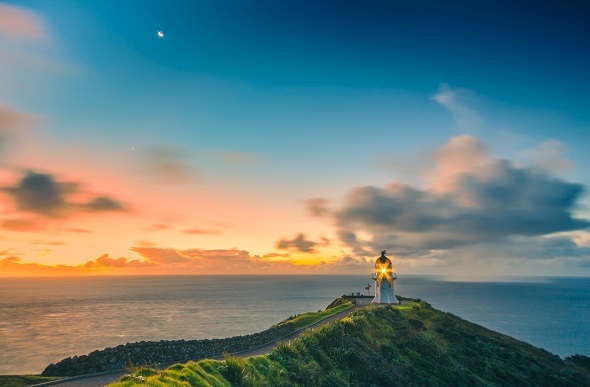 The Moon and Venus set with the sun at the Cape Reinga Lighthouse.
The Moon and Venus set with the sun at the Cape Reinga Lighthouse.
A low-level flight from Kerikeri takes me over pea-green isles and the white sands of Ninety Mile Beach. Below me I see campers, picnickers and people fishing from Ninety Mile Beach - before we reach a landing strip near Cape Reinga, often called the northernmost tip of New Zealand.
But it isn’t. It’s actually the country’s northwestern tip. The real northern tip is 30kms east - Surville Cliffs at North Cape, a closed-to-the-public conservation area and, anyway, inaccessible to all but experienced hikers and climbers.
So, Cape Reinga does nicely as a logical substitute.



